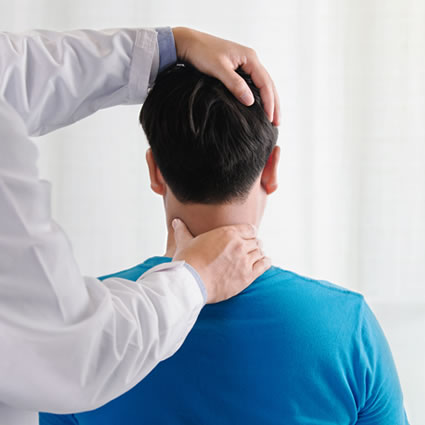Upper Cervical Chiropractic Care for the Delaware Area
 Upper cervical care is a specific type of chiropractic adjustment that targets the neck and head, specifically the uppermost vertebrae. It focuses on restoring proper alignment in these areas, relieving pressure on nerves, and helping restore balance within the body’s nervous system.
Upper cervical care is a specific type of chiropractic adjustment that targets the neck and head, specifically the uppermost vertebrae. It focuses on restoring proper alignment in these areas, relieving pressure on nerves, and helping restore balance within the body’s nervous system.
Why Upper Cervical Chiropractic?
The craniocervical junction houses a portion of the brainstem, making it a vital area to address for optimal health. Even minor misalignments or subluxations in the C1 can lead to various dysfunctions throughout the body. Whether caused by slips, falls, or accidents, these misalignments can contribute to neck pain, lower back pain, and even issues with the hips and knees.
The Righting Reflex
One question we often hear is how upper cervical adjustments can potentially alleviate low back pain. The answer lies in the body’s righting reflex (citation 1), which aims to keep the eyes level with the horizon at all times. When the Atlas bone is misaligned, the body compensates to maintain visual stability. Unfortunately, this compensation can lead to imbalances in other areas, such as the lower back and hips. By realigning the Atlas bone, we can help restore balance and alleviate pain throughout the body.
The Importance of Vertebral Arteries and Cranial Nerves
Our treatments also take into account the critical role of the vertebral arteries (citation 2), which supply blood to one-third of the brain. These arteries pass through the transverse foramen in the cervical spine, ensuring proper oxygenation and nourishment for optimal brain function.
Additionally, these arteries are responsible for supplying 11 out of the 12 cranial nerves, which play a significant role in sensory perception and vision. By improving blood flow and optimizing Atlas alignment, our patients often report positive changes, such as improved vision and heightened sensory awareness.
Atlas Orthogonal Technique
At our practice, we use the Atlas Orthogonal (AO) technique. This method involves checking for a short leg, which correlates with the body’s compensation because of Atlas misalignment. By addressing this imbalance, we can restore proper alignment and alleviate discomfort caused by muscular imbalances.
Another tool we use is scanning palpation. This technique involves scanning the cervical spine for tender nerve roots. By identifying these areas of tenderness, we can accurately target them during the adjustment process. Many patients experience immediate relief or significant reduction in tenderness following the adjustment.
Conditions It Can Address
Upper cervical care may help with the following:
- Neck pain
- Headaches & migraines
- Back pain
- Vertigo
- Dizziness
- Reduced range of motion
- Tinnitus
- Sleep disorders
- Stress and anxiety
- Asthma
- Digestive issues
The Healing Process: What to Expect
Healing takes time, and the nervous system requires approximately 90 to 120 days to fully heal.(citation 3) While immediate improvements are possible, we advise our patients to allow ample time to observe the full benefits of our treatments. Many times, we can see noticeable changes within the first few weeks of treatment. Chronic conditions, including mechanical low back pain, neck pain, and radiculopathies, have shown promising results with upper cervical chiropractic care. (Citation 4)
Frequently Asked Questions
What are some lesser known benefits of this method?
Book an Appointment
Experience the benefits of upper cervical chiropractic care at First State Health & Wellness. Call us today to book an appointment.
REQUEST APPOINTMENT »
References:
Citation 1:
Morningstar MW, Pettibon BR, Schlappi H, Schlappi M, Ireland TV. Reflex control of the spine and posture: a review of the literature from a chiropractic perspective. Chiropr Osteopat. 2005;13:16. Published 2005 Aug 9. doi:10.1186/1746-1340-13-1
Citation 2:
Jason Belcher, DC & Nathanael Barnes, DC, Journal of Upper Cervical Chiropractic Research ~ Volume 2022 ~ December 19, 2022 ~ Pages 13-15
Citation 3:
Menorca RM, Fussell TS, Elfar JC. Nerve physiology: mechanisms of injury and recovery. Hand Clin. 2013;29(3):317-330. doi:10.1016/j.hcl.2013.04.002
Citation 4:
Suh, C.H., “Peripheral Nerve Response to Experimental Damage,” International Review of Chiropractic, July 1976, pp. 18-21 and 26-27.

